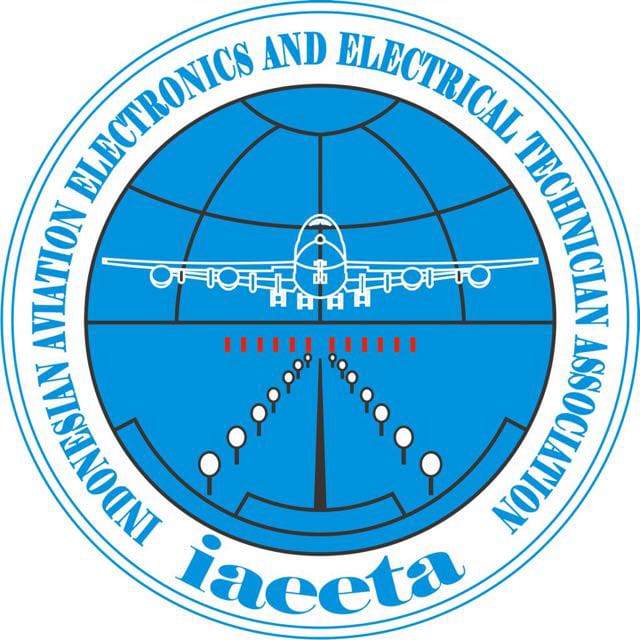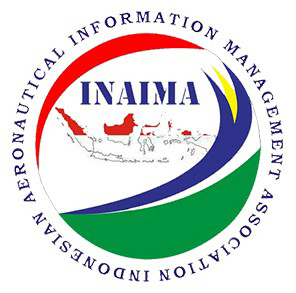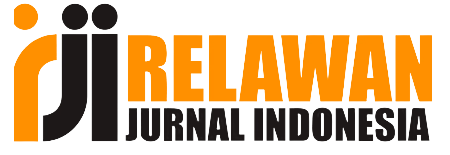Pemanfaatan Simulator Terbang pada Pendidikan Vokasi Penerbang dalam Meningkatkan Minat Bakat Taruna Penerbang
Abstract
: The purpose of this research is to examine the utilization of flight simulator in Aviation Vocational School and its impact on increasing the interest and talent of cadets. Simulators have become crucial devices in training prospective pilots and provide real-life experience in facing diverse and complex flying situations. A total of 20 first-year cadets were the respondents in this study. The research method used an experimental study, where performance measurements were taken during the initial test, 5, and 10 hours of simulator usage. The test results showed a linear improvement in flying performance with the duration of simulator usage (calculated t-value > table t-value ranging from 0.375 to 0.530). The respondents experienced a relatively high improvement in performance (55.8%) compared to the first hour of usage (25.2%).
Downloads
References
Alfred T. Lee. (2005). Flight Simulation Virtual Environments in Aviation. Routledge.
Allen, J. G., Macnaughton, P., Guillermo, J., Cao, C. X., & Flanigan, S. (2018). Airplane Pilot Performance in a Flight Simulator Under Varying Carbon Airplane pilot fl ight performance on 21 maneuvers in a fl ight simulator under varying carbon dioxide concentrations. Journal of Exposure Science & Environmental Epidemiology, September 2020. https://doi.org/10.1038/s41370-018-0055-8
Anderson, J., & Lapierre, K. (2014). Simulator-based evaluation of airline pilot performance during extended wakefulness. Journal of Aviation/Aerospace Education & Research, 23(1), 43–55.
Anderson, J. R. (2017). Cognitive psychology and its implications. Worth Publishers.
Aversano, A., & Scuotto, V. (2018). Evaluating the effectiveness of flight simulators in training airline pilots: A systematic literature review. Transportation Research Part E: Logistics and Transportation Review, 117, 203–217.
Ceylan, H., et al. (2018). Effects of virtual reality and flight simulator training on a procedural skill: A pilot study. Journal of Aviation/Aerospace Education & Research, 27(2), 1–17.
Civil Aviation Authority. (2017). A Guide to Flight Simulator Qualification (Fifth Edit). https://publicapps.caa.co.uk/docs/33/CAP1038.pdf
Civil Aviation Authority. (2019). Human factors in aircraft maintenance and inspection. https://publicapps.caa.co.uk/docs/33/CAP716.pdf
Civil Aviation Safety Authority. (2018). Flight Simulation Training Devices: Advice for Training Organisations. https://www.casa.gov.au/sites/default/files/au-2019-05.pdf
Csikszentmihalyi, M. (1990). The psychology of optimal experience. Harper Perennial.
Dymora, P., Kowal, B., Mazurek, M., & Śliwa, R. (2021). The effects of Virtual Reality technology application in the aircraft pilot training process The effects of Virtual Reality technology application in the aircraft pilot training process. IOP Conference Series: Materials Science and Engineering. https://doi.org/10.1088/1757-899X/1024/1/012099
Federal Aviation Administration. (2018). Flight Simulation Training Device Qualification Standards for Airplane. https://www.faa.gov/documentLibrary/media/Advisory_Circular/AC_120-40D.pdf
Federal Aviation Administration (FAA). (2015). Pilot Training and Simulation: The Future of Training Is Here. https://www.faa.gov/regulations_policies/policy_guidance/pilot_safety_brochures/media/pilot_training_and_simulation.pdf
Grant, R. (2018). The impact of simulator fidelity on pilot performance and skill retention. International Journal of Aviation Psychology, 28(4), 294–311.
Gudmundsson, S. V. (2016). Vocational Education and Training in Aviation: Current Issues and Future Challenges. Journal of Vocational Education & Training, 68(2), 129–146. https://doi.org/10.1080/13636820.2015.1122877
Helmreich, R. L., Merritt, A. C., & Wilhelm, J. A. (1999). The Evolution of Crew Resource Management Training in Commercial Aviation. International Journal of Aviation Psychology, 9(1), 13–32. https://doi.org/10.1207/s15327108ijap0901_2
Holland, J. L. (1997). Making vocational choices: A theory of vocational personalities and work environments. Psychological Assessment Resources.
ICAO. (2021). Manual on the Regulation of Flight Simulator Training Devices. https://store.icao.int/manual-on-the-regulation-of-flight-simulator-training-devices-eighth-edition
Iii, P. L. M., & Starr, A. W. (2018). International Journal of Aviation , Aeronautics , and Aerospace Flight Simulator Fidelity , Training Transfer , and the Role of Instructors in Optimizing Learning. International Journal of Aviation, Aeronautics, and Aerospace, 5(1).
Kamarulzaman, M. R., Abdul Halim, M. S., Omar, R., & Isa, K. B. M. (2019). Military aviation education and training: Malaysia’s experience. Ournal of Air Transport Studies, 10(1), 85–102.
Kitchenham, B. (2004). Procedures for performing systematic reviews (33(2004)). Keele University.
Kloosterman, R. (2018). Preparing for Aviation: How Vocational Education and Training System Affects Aspiring Pilots. Journal of Vocational Education & Training, 70(1), 85–106. https://doi.org/10.1080/13636820.2017.1394766
Knight, C. C., & Sayed, T. (2016). Validating training program requirements for an aviation flight simulator based on levels of fidelity. International Journal of Aviation, Aeronautics, and Aerospace, 3(4), 1–10.
Maurino, D. E., Reason, J., Johnston, N., & Lee, R. B. (2005). Beyond Aviation Human Factors: Safety in High Technology Systems. Ashgate Publishing.
Permenko 6 2022 Stranas Vokasi, 1 (2022).
Micaelli, S., & Morin, J. (2020). Vocational Education and Training for Pilots: A Comparative Analysis of the French and Australian Systems. Journal of Vocational Education & Training, 72(2), 173–191. https://doi.org/10.1080/13636820.2019.1695975
National Transportation Safety Board. (2016). General aviation pilot’s guide to preflight weather planning, weather self-briefings, and weather decision-making. https://www.ntsb.gov/safety/safety-studies/Documents/SS1601.pdf
O’Hare, D., & Wiggins, M. W. (2016). Advanced Situational Awareness Training. In M. J. Smith (Ed.). In Encyclopedia of Aerospace Engineering. John Wiley & Sons. https://doi.org/10.1002/9780470686652.eae450
Panshikar, A. M., Chaitanya, R. K., & Pal, M. (2016). Curriculum and syllabus design for aeronautical engineering programs: A review. Journal of Aerospace Engineering, 29(4), 04016017.
Pate, J. L. (2019). The impact of flight simulation on student pilot motivation and engagement: A narrative review. Journal of Aviation Technology and Engineering, 8(1), 75–85.
Prettner, K., & Strulik, H. (2020). It’s the Way You Think: The Role of Cognitive Abilities and Cognitive Styles in Vocational Education and Training. Journal of Vocational Education & Training, 72(3), 367–389. https://doi.org/10.1080/13636820.2019.1695977
Raybould, M., & Wilk, G. (2015). A Review of Recent Developments in Pilot Training. The International Journal of Aviation Psychology, 25(4), 247–262. https://doi.org/10.1080/10508414.2015.1109693
Salas, E., Wilson, K. A., Murphy, C. E., & King, H. (2006). Enhancing the effectiveness of team training: Principles, guidelines, and lessons learned. In R. S. Jensen & E. Salas (Eds.) (Handbook o). CRC Press: New York.
Sánchez-Pérez, N., Ferrer-Cascales, R., & García-Montes, J. M. (2019). Assessment of Pilots’ Aptitude and Motivation Using Psychometric Tools. International Journal of Environmental Research and Public Health. https://www.mdpi.com/1660-4601/16/13/2400
Smith, B., & Hertzum, M. (2008). Situational Awareness in Collaborative Work. In B. C. Berndtsson, A. Moström, T. Gorschek, & R. Feldt (Eds.) (Advances i). Springer.
Smith, R., & Jones, M. (2019). The role of flight simulators in pilot training and their impact on aviation safety. Journal of Aviation Technology and Engineering, 8(1), 9–23.
Stanton, N. A., Salmon, P. M., Walker, G. H., Baber, C., & Jenkins, D. P. (2005). Human Factors Methods: A Practical Guide for Engineering and Design. Farnham, UK: Ashgate Publishing.
Stein, M., & Robinski, M. (2012). Simulator sickness in flight simulators of the german armed forces. Aviation Psychology and Applied Human Factors, 2(1), 11–19. https://doi.org/http://dx.doi.org/10.1027/2192-0923/a000022
Sudarmaji, H., Prasojo, G. L., Rubiono, G., & Arif, R. (2021). Pendidikan Vokasi Aviasi : Peluang dan Tantangan. Jurnal Aviasi Indonesia, 1(1), 1–6. http://ejournal.icpa-banyuwangi.ac.id/index.php/skyhawk/article/view/1
Taneja, N. K. (2018). Curriculum design for aviation management programs. Journal of Aviation Technology and Engineering, 8(1), 24–35.
Taylor, J. C. (Ed. . (2015). The Human Factor: Revolutionizing the Way People Live with Technology. Museum of Flight Press.
U.S. Federal Aviation Administration. (2020). Pilot’s handbook of aeronautical knowledge. https://www.faa.gov/regulations_policies/handbooks_manuals/aviation/pilot_handbook/
Valverde, H. H. (1973). A Review of Flight Simulator Transfer of Training Studies. Human Factors: The Journal of Human Factors and Ergonomics Society, 15(6), 510–522. https://doi.org/10.1177/001872087301500603
Van Es, A., Van Der Veen, J. T., & Van Den Bossche, P. (2020). Exploring the Added Value of Flight Simulators for Complex Skill Development in Vocational Education and Training. Journal of Vocational Education & Training, 72(4), 500–520. https://doi.org/10.1080/13636820.2020.1795479
Wickens, C. D., & Hollands, J. G. (2015). Engineering Psychology and Human Performance. Pearson.
Wiegmann, D. A., & Shappell, S. A. (2012). A human error approach to aviation accident analysis: The human factors analysis and classification system. Ashgate Publishing.
Winter, J. C. F. De, & Dodou, D. (2012). Effectiveness of Whole Body Flight Simulator Motion : A Comprehensive Meta-Analysis. The International Journal of Training, October 2014, 37–41. https://doi.org/10.1080/10508414.2012.663247
Wu, X., & Yu, Z. (2020). Flight simulator training for pilots: A review of research on training effectiveness and transfer of training. Aerospace Medicine and Human Performance, 9(10), 777–784.
Zhang, L., & Park, M. (2021). The role of flight simulators in pilot training: A systematic review. Journal of Air Transport Management, 91, 101988.
Copyright (c) 2023 HADI PRAYITNO

This work is licensed under a Creative Commons Attribution-NonCommercial-NoDerivatives 4.0 International License.



.png)


1.png)
.png)












